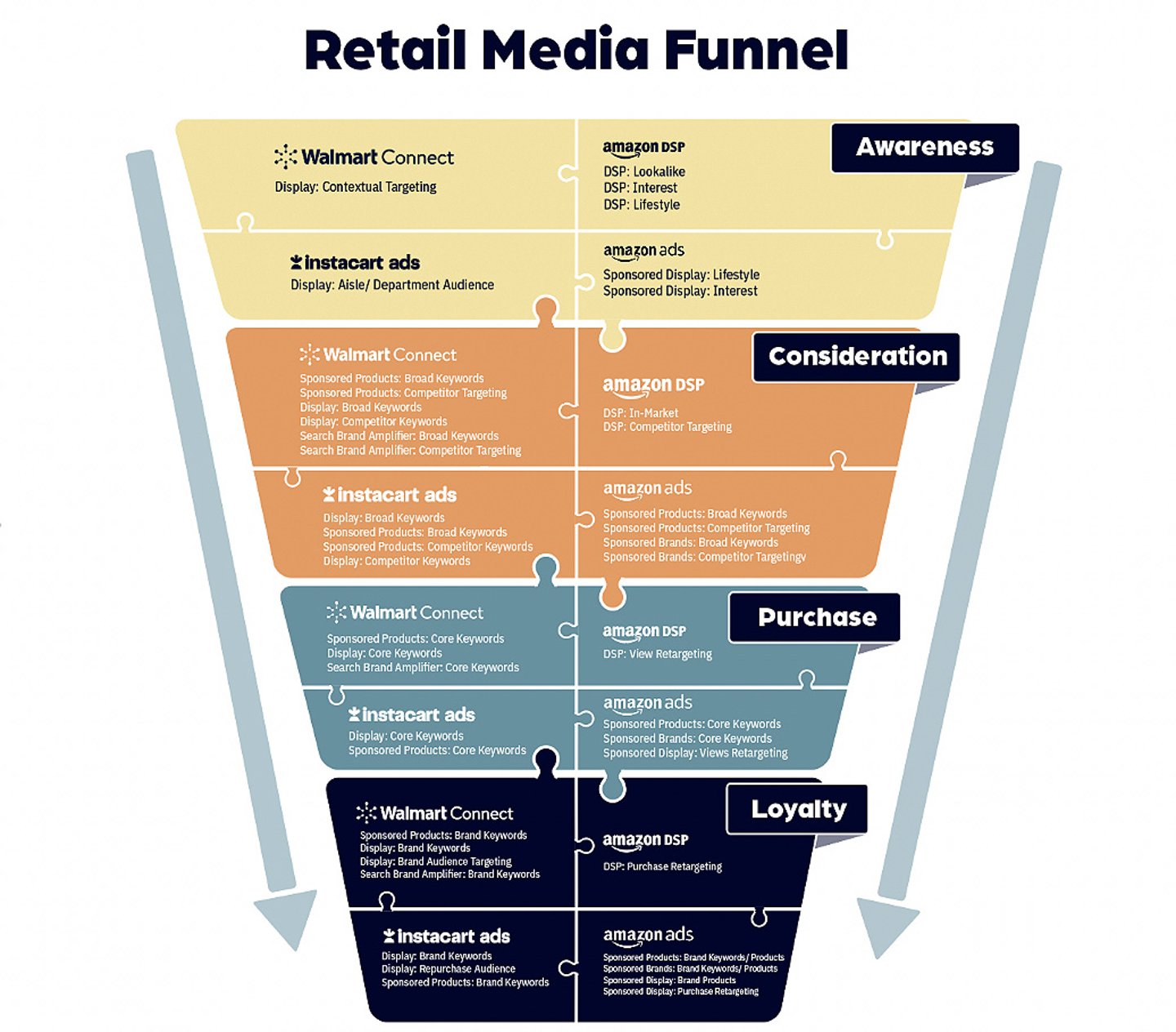Report: How Brands Should Allocate Media Budgets
Retailers are launching media networks at a bristling pace, and most expect the field to widen in the next few years. Many advertisers confront more options than they have resources for. That puts pressure on allocation, and current models are seriously flawed. Bobsled, a digital marketing agency (acquired by Acadia in 2022) that helps brands scale on Amazon, Walmart and Instacart, tackled these challenges in a research report released in May.
Ideally, mid-sized marketers told Bobsled they would design and allocate a fluid advertising budget by business strategy, not platform. However, most of these marketers are still allocating budgets by retailer/platform, which is easy but generally looks backwards, factoring in historical revenue rather than future opportunities. Another approach to allocating media spend is by the metrics, such as target ROAS, which is predictable and easy to calculate, but limits sales and market share growth.
Data from adtech provider Pacvue found that more than 90% of campaigns target a ROAS goal, and Bobsled’s own research in January 2022 found that 61% of brands still apply ROAS when their priority is growth.
It doesn’t help that e-commerce relies on top-down budgeting, meaning it gets the scraps once other digital needs are funded. There are three problems with this top-down approach to budgeting. It justifies budgets on past performance, not future growth; it presumes channel loyalty that’s disproven by changing browsing and buying habits; and it fails to account accurately for the impact of channels (e.g., Instacart) that can’t be attributed to a specific retailer.
What’s needed is a forward-looking view that accounts for brand goals — allocating by funnel stage, not platform or metric.
Brands should build a strategy around their true objective at the brand, product or retailer level, and the funnel stage their consumers are in:
- Awareness: focus on impressions and CPM (cost per mile/thousand)
- Consideration: focus on clicks and CPC (cost per click)
- Purchase: focus on conversions and CPA (cost per action)
- Brand defense/loyalty: focus on conversions/retention and CPA
The report details the before-and-after results of applying this approach to a snack food brand that sells and advertises on Amazon via pay-per-click (PPC), Instacart and Walmart. It also clarifies the factors that help determine which funnel stage to emphasize — category maturity, product maturity, company size, product performance in catalog, and catalog size.
To take this approach, marketers need to overcome eight limitations, which include organizational silos and the lack of uniform retailer data, auction rules and attribution (which make it hard, if not impossible, to compare like-for-like in ad calls by retailer).
Marketers can solve for this inconsistency by adopting universal KPIs based on funnel stage: impressions for awareness, clicks for consideration, and order for purchase and loyalty. They can also standardize internal reporting by waiting until the longest attribution window has closed before comparing performance between campaigns.
Additionally, marketers need to test and learn with budget amounts they can afford to lose. Pacvue shows advertisers that try a new ad type within its first three months see 8% greater sales than those that don’t.







